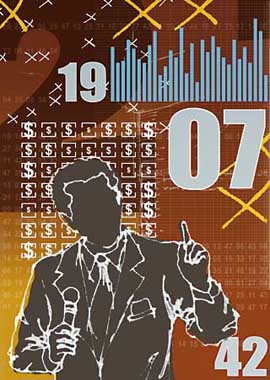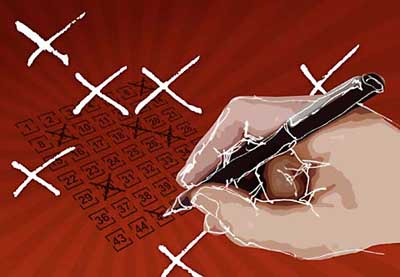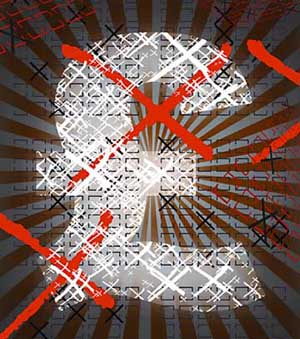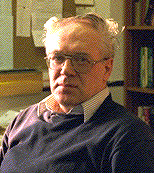
The UK National Lottery - a guide for beginners
The UK National Lottery began in November 1994. Optimistic statisticians hoped that the surrounding publicity might increase interest in ideas of chance and probability, and perhaps even enhance the nation's numeracy.
Hot tips
In the early days of the Lottery, it was quite common to see newspaper articles that looked back on what numbers had recently been drawn, and attempted to identify certain numbers as "due" (they hadn't appeared for a dozen draws), other numbers as "hot" (having occurred several times in succession), much in the manner of racing tipsters studying form. The question of how these inanimate rubber spheres, whirling around a plastic tub, were supposed to be influenced by previous draws was never addressed. Few such articles appear now; without these words being specifically used, it does seem to be generally believed that the outcome of each draw is independent of the rest, and that each of the possible combinations has the same chance every time.

The game has tightly drawn rules about the amount of prize money available, and how it shall be allocated. The mathematics of counting then allow you to work out your winning chances, and how much your prize might be. For the principal game, players must select six different numbers from the list {1,2,...,49}; in the Lottery draw, six of these numbers are selected at random as "main" numbers, and a seventh is also chosen (the Bonus number). Players win some prize if their selection matches at least three of the main numbers. If they match all six main numbers, they qualify for a share of the Jackpot prize, with an average value of £2 million - and, occasionally, ten times this amount! However, less than half the money staked is returned as prizes, so, on average, you lose more than 50p each time you buy a £1 ticket.
To work out the winning chances, note that the number of different choices of six numbers from a list of 49 numbers is $^{49}C_6=13,983,816=N$, say. And all these $N$ combinations are taken to have an equal chance of being the six main numbers. So if you buy one ticket, your chance of a Jackpot share is 1 in $N$, or, in round figures, one in 14 million.
It is hard to appreciate how small this figure is: for example, the chance of death within one year for a middle-aged healthy man might be one in 1,000. If so, the chance he dies within the next week is one in 52,000; within the next day about one in 365,000, within the next hour about one in nine million - still bigger than the chance of a jackpot share. Indeed, on these figures, he is about as likely to win a jackpot share with one ticket as he is to die in the next 40 minutes.
All those who match all six main numbers share the amount in the Jackpot pool, which depends mainly on total sales. To win a gigantic prize, you hope to be the only person with a winning ticket. What can you do to bring this about?
Really random

Very little information has been disclosed about what combinations UK players have chosen. Apparently, at one stage, 10,000 people were selecting the numbers 1 to 6, while the most popular single choice is said to be those multiples of seven, {7,14,21,28,35,42}. Of course, after every draw, we learn how many players shared the jackpot, and hence exactly how many selected that particular combination that draw. Almost one time in six, no-one has won a jackpot share; and one time in five, one winner has scooped the entire jackpot pool. At the other extreme, 133 people selected the winning combination {7,17,23,32,38,42}, while on another occasion 57 chose {2,12,19,28,38,48}.
But the Swiss Lottery permitted Hans Riedwyl complete knowledge of player choice for one particular week; on average, each combination was chosen about twice, but he identified types of combinations that attracted far, far more players:
If the mind-sets of Swiss and UK players are similar, there are lessons here.
- previous winning combinations, going back several years;
- winning combinations from Lotteries in neighbouring countries;
- combinations that, when marked on the Lottery ticket, made straight lines, zig-zags, or symmetrical patterns;
- other systematic choices, such as last week's winning numbers, all with one added (or subtracted).
How to win more

Avoid any such systematic choices! Too many other players may think along your lines, and some may copy your selection. Be aware of the two players who split the jackpot in the Irish Lottery, both having picked their numbers using the dates of birth, ordination and death of the same priest! One idea is to choose your numbers completely at random, perhaps by use of an ordinary deck of cards (discard three of them, shuffle well the other 49), or the official Lucky Dip facility. But do not fall into the trap of believing that spreading your choices evenly across the card is the same as choosing randomly: far from it!
If the combinations listed above, with 133 and 57 winners are marked on the Lottery ticket as set out at the time (nine rows of five numbers, a bottom row with four numbers), you will see that
It is as though players had run their pencils down the middle of the ticket, dodging a little from side to side, thinking they were choosing at random. They were not - as their disappointing jackpot prize proved.
- every number is on a different row
- no two numbers are adjacent vertically
- no numbers are in the outside columns.
One further factor: many players choose numbers based on family birth dates, and so the numbers 1 to 31 are be selected more often. To help avoid their choices, bias your random choice towards the higher numbers. How? Plainly, the mean value of a single number is $(1+49)/2=25$ and so the mean total over six numbers chosen at random is $6\times 25=150$. The calculation for the variance is more complicated - successive choices are not independent - but Riedwyl's advice is to select your numbers at random, but then reject them en bloc unless:
This still leaves over 1,500,000 combinations, and following his advice makes no difference whatsoever to your winning chances - but it is likely to lead to bigger prizes.
- their total is at least 177
- 3,4 or 5 of them are on the edge of the ticket
- they do not form a single cluster, nor are they spread as six isolated numbers.
The smaller prizes

The door to riches?
We have concentrated on the prospects of winning a jackpot share, as that is the main motivation for most Lottery players. But working out the chances of the other prizes is not difficult. Call the six winning numbers the Good numbers, the other 43 the Bad numbers. So to match exactly five of the winning numbers, your selection combines five of the six Good numbers (with 6 ways to select them) along with one of the 43 Bad numbers (43 choices), making $6\times 43=258$ possible winning tickets. The Bonus number is just one of the Bad numbers, so six of these choices win a share of the Bonus prize, the other 252 qualify for a Match 5 prize. \par Similarly, to win a Match 4 prize, you select 4 of the 6 Good numbers (in $^{6}C_4=15$ ways), along with 2 of the 43 Bad numbers (in $^{43}C_2=903$ ways), giving $15\times 903=13,545$ combinations that match exactly four winning numbers. And there are $^{6}C_3\times ^{43}C_3=246,820$ choices that give the fixed Match 3 prize of $\pounds10$. This gives a grand total of 260,624 out of the $N$ different choices that win some prize, meaning that each ticket has chance $260,624/N$, or about one in 54, of winning something. Buy one ticket a week, and expect about one win a year. With average luck, you will spend about $\pounds1000$ before you win your first prize of more than $\pounds10$.
The Table shows what prize (round figures) you might expect. The winning chance, at any prize level, is just the corresponding Frequency, divided by N.
| Frequency | Maximum Prize(£) |
Mean Prize(£) |
Minimum Prize(£) |
|
| Jackpot | 1 | 22.6 million | 2 million | 122,500* |
| Bonus | 6 | 1,236,000** | 100,000 | 4,100 |
| Match 5 | 252 | 7,800 | 1,500 | 180 |
| Match 4 | 13,545 | 164 | 62 | 16 |
| Match 3 | 246,820 | 10 | 10 | 10 |
*This figure would have been about £48,500 if unwon money from a previous week had not been added to the prize fund.
**Draw 286, where £15 million was arbitrarily (and uniquely) added to the Bonus pool is omitted.
Be above average

It could be you - but it probably won't be
Statistical considerations can suggest how you might win more than these average amounts. Your aim is to choose combinations that other players tend to avoid, so we can look at the data to see when there are fewer jackpot winners than would be expected, given the level of sales. The first 850 draws contained 40 occasions where the winning combination had three consecutive numbers, such as {34,35,36}. Taking account of the sales in those 40 draws, we would have expected about 135 jackpot winners; but there were only 88. More reliably, those 850 draws had a pair of consecutive numbers 406 times; overall, there were 25% fewer jackpot winners than expected, so again the prize tended to be correspondingly higher. Over the same period, there have been only 58 occasions on which the winning combination had three or more numbers higher than 40, but the overall number of jackpot winners in those draws is less than half the figure expected.
Whatever numbers you select, and whether or not you remain faithful to the same combination every draw, your chance of winning, and the average number of prizes, are not affected. The only "skill" is in selecting combinations that fewer other players use, leading to higher prizes - but we have little direct knowledge of other players' choices. If, by some miracle, this article were to be widely read and its contents splashed over the popular press, enough players might change their habits, and combinations that used to be unpopular (hence potentially more profitable) could become chosen more frequently. If you must enter the Lottery, there is much to be said for making a completely random selection of numbers.
About the author

John Haigh is Reader in Mathematics and Statistics at the University of Sussex. His book, Taking Chances, (now translated into Spanish and Chinese, and in a second edition) aimed at helping the layperson understand ideas of probability, is an all-time Plus favourite. You can read our review in Issue 13.
Comments
Anonymous
I think Sergey Tabin was a student of John Haigh in Math, at the time he wrote the Lottery Check Mate.
Dane.
Anonymous
In Italy lotto is 1 to 90 but may I know why all the time you work the numbers by 1 to 49, I think it must be do with 1 to 90. Hope you understand and answer me. Hope to hear from you.
Anonymous
The UK lottery uses numbers 1 to 49.
rana shakeel
1 to 49 all 6 numbers
Clayton
Please tell me the method
Anonymous
You can calculate your chances by using john's formula
Mokibelo
Please tell me the method
Anonymous
Still you have 20x more, of winning the lottery than you have of becoming a feast for a fish :-)
(sources: http://www.flmnh.ufl.edu/fish/sharks/isaf/graphs.htm & https://www.lottoland.co.uk/magazine/are-you-more-likely-to-win-the-lot… )
Evil Eyed Bear
I play, indeed have played the UK 'lotto' since its introduced in 1994.
Dog knows how much money I've 'thrown down the kharzi', but I wonder, how many sad eejits are there out there, like me, who daren't change their numbers/not play each week?
Sad of London!